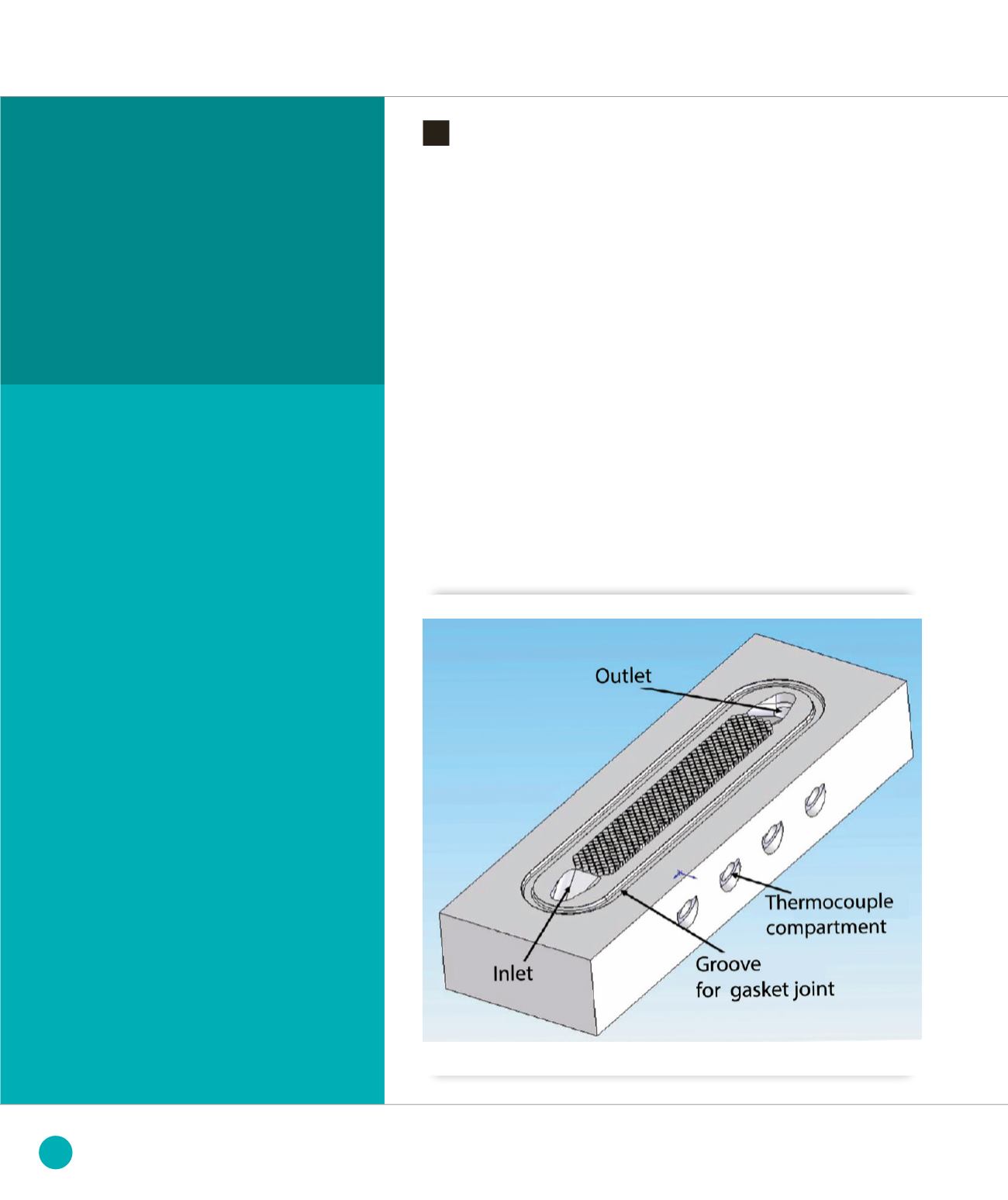
Development of high
performance heat transfer
devices for synchrotron
facilities
Design of light beam absorbers for
synchrotron facilities requires knowledge
of the actual performance of heat sinks.
More specifically, the key parameters are
firstly the heat transfer coefficient at fluid-
structure interfaces and secondly the head
losses. Conventional approach is not always
practical since for the more demanding
situations it either results in over-design,
uneconomical process, or even failure to
achieve the desired performance. In order
to improve knowledge of conventional
heat-exchangers, and also to evaluate the
benefit of introducing higher performance
designs, a thermal-mechanical laboratory
has been built at SOLEIL, and a Ph. D.
Thesis financed (2009-2012). Three types
of channels have been tested. Depending
on the flow rate domain (Reynolds number),
substantial differences have been evidenced,
allowing for more insightful design choices.
Additionally, a more efficient numerical
computation technique has been developed
for the resolution of the inverse heat
conduction problem. Such technique will
allow for fast reconstruction of the heat
coefficient patterns, based on series of tests
with localized heat excitation/temperature
measurements.
One salient feature of synchrotron
radiation facilities is their capability to
deliver stable, high brilliance photon flux,
as a result of the deviation of relativistic
electrons. Based on first principles, the
emitted photon beams are produced
uniformly over a 360° span, while
end-users (beamlines) can only use
a small fraction of that angular aperture.
Consequently, it is necessary to introduce
components that are able to absorb
the corresponding unused power. Such
devices, generally named “absorbers”,
are placed in to the storage ring in order
to save space. Therefore, not only must
they accommodate the high incoming
thermal fluxes (in the order of a few
hundreds
of MW/m²), but also they must
avoid excessive heating so that ultra-high
vacuum conditions can be achieved and
damages induced by thermal-mechanical
induced stresses can be avoided.
To meet such a result, one key aspect is
the ability to introduce efficient heat-sinks.
In this particular case, it is vital to
be in a position to drain the absorbed
energy in a highly efficient, compact heat-
exchanger. Compactness allows
for placing the heat sinks closer to the
heat sources and results in shorter heat-
conduction paths, simultaneously reducing
hot spots and thermal-mechanical
stresses.
With those constraints in mind, it is evident
that conventional heat exchangers might
not fulfill the requirements in all cases.
It is also a well-established fact that
even for standard geometries, large
uncertainties remain in actual values
(not to mention space-wise distribution)
of the heat transfer (film) coefficient.
To deal with those difficulties, standard
engineering practice implicitly uses
lower-bound, uniform values, as available
in the open literature. While efficient
and appropriate in most cases, SOLEIL
mechanical engineering team has found
that it becomes not viable anymore for
➊
Isometric view of diamond shaped fins heat exchanger
MODELING, METHODOLOGY AND INSTRUMENTATION
120
SOLEIL
HIGHLIGHTS
2013


